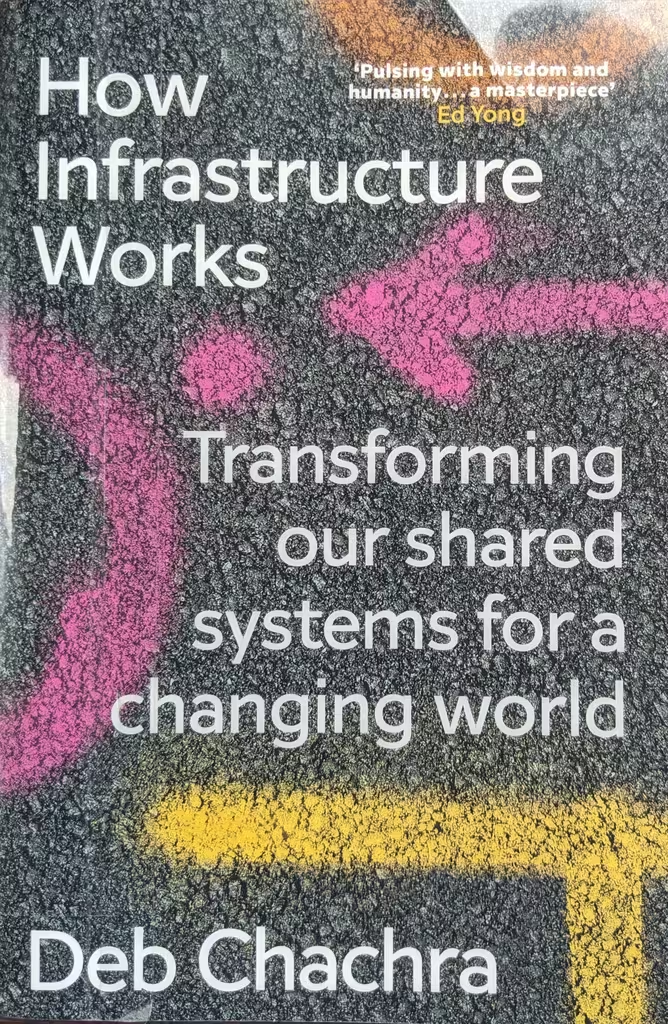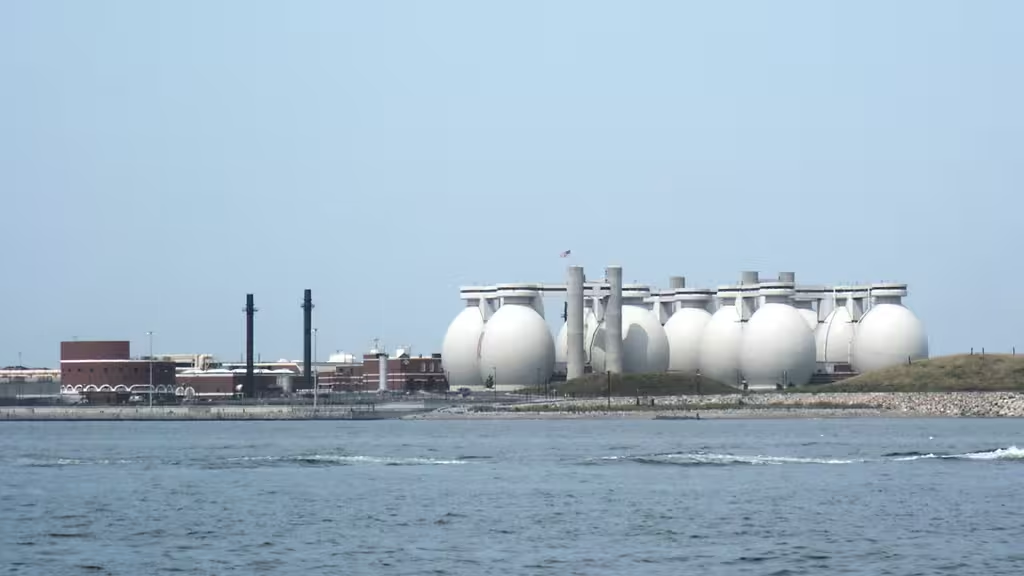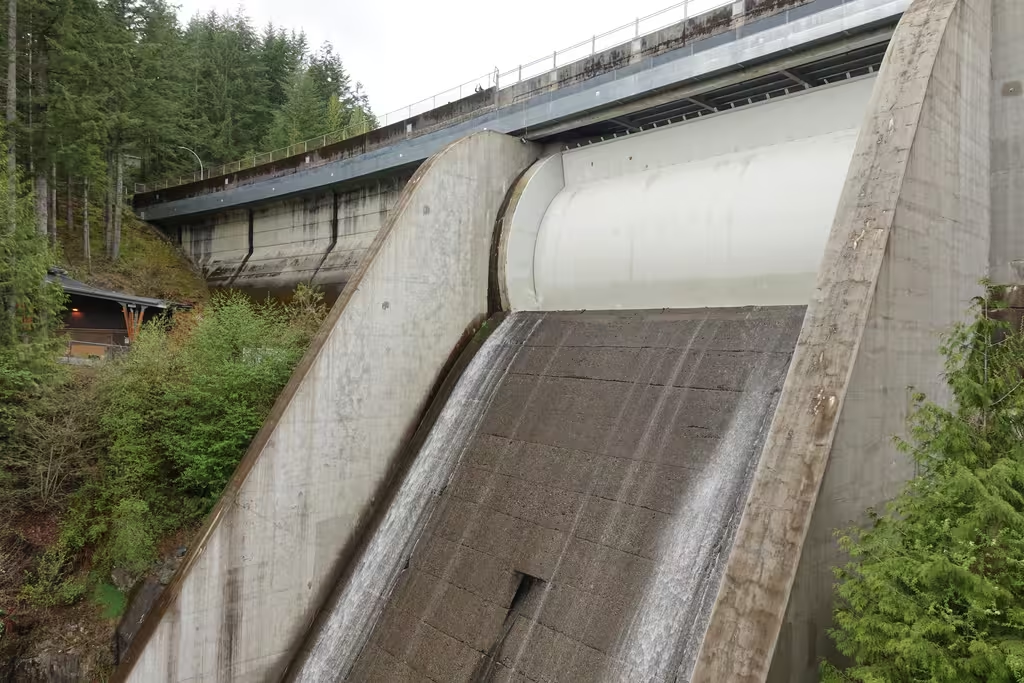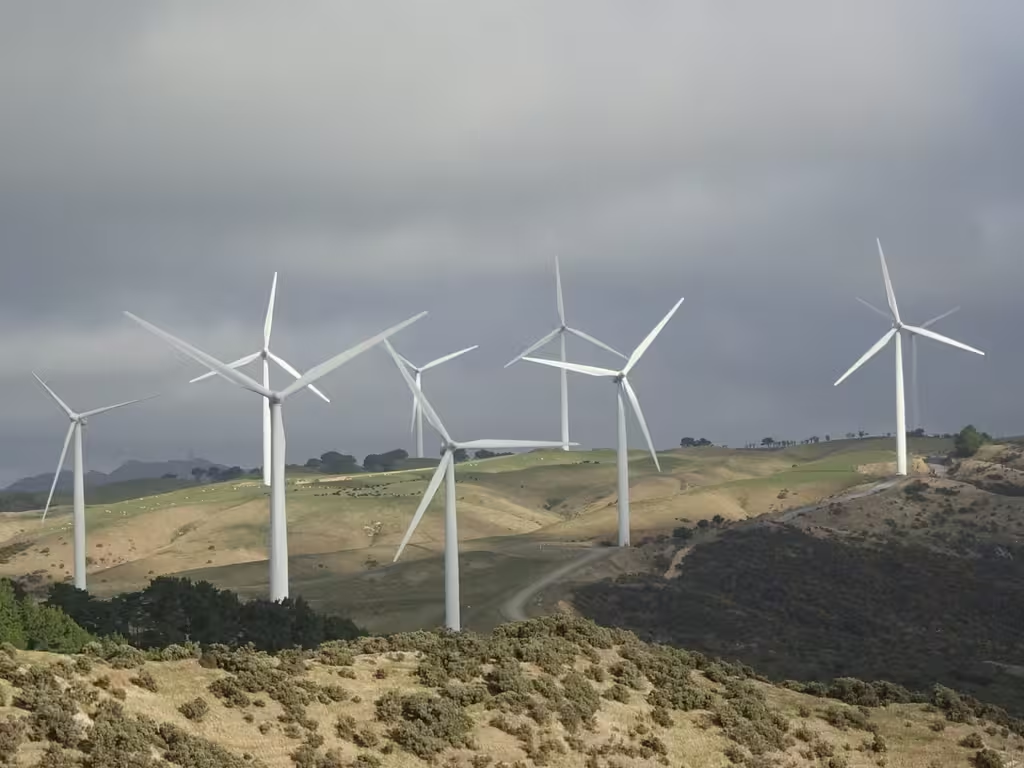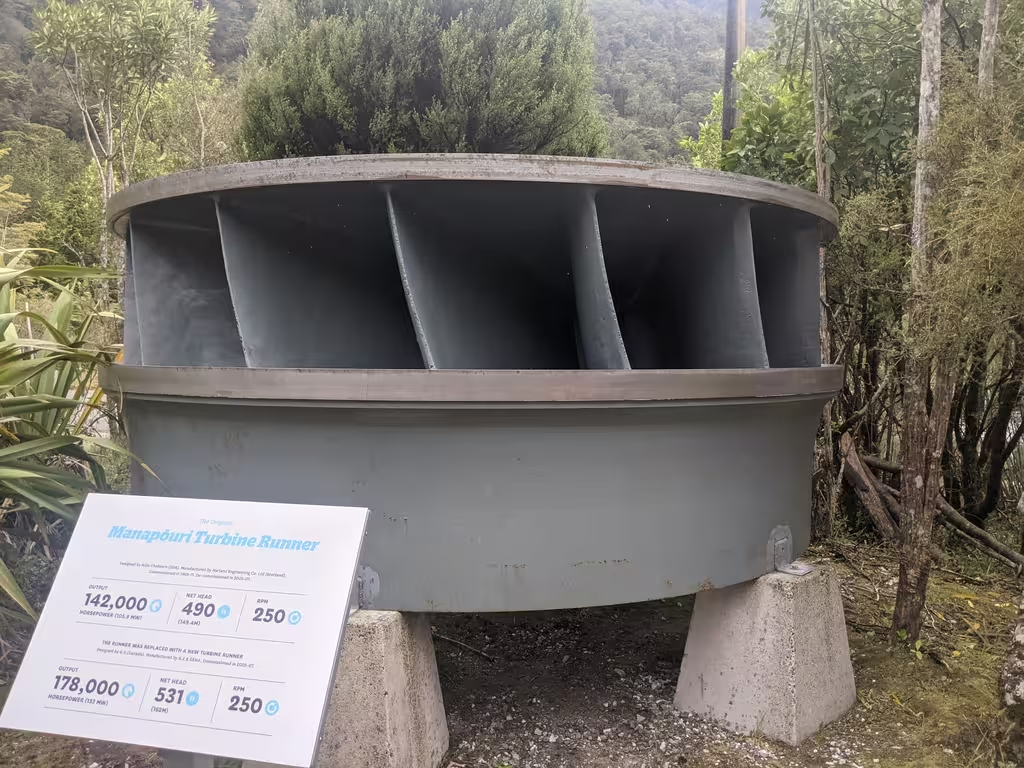I’d seen mention of this book online as a work that ultimately proposes a positive view of where our society can and should be going. So I checked it out from the local library (also infrastructure) and eventually got to reading it, finishing a day after the twice-renewed due date.
- Deb Chachra, How Infrastructure Works: Transforming our shared systems for a changing world, Penguin Random House, 2023.
Canadian undergraduate engineering programs are required to include instruction on the impact of technology on society, and rightfully so. It’s something that I also feel that I should stay up to speed about, as a professional engineer and teacher of undergraduate engineering students. This book is very much about the impact of technology on society, as well as how technology can make our society sustainable—but only if combined with changes to our socioeconomic systems.
Like me, Prof. Chachra was born to immigrants to Canada; she now lives in Boston (Cambridge), where I studied in the early 2000s. She’s a bit older than me, grew up in a different province of the same country, and works for an elite undergraduate college. There are enough cultural similarities and geographic commonalities that the references are all familiar to me.
I pretty much agree with everything in the book. I hope we can pull it off. Nothing is guaranteed—a thought that is especially apropos the week after the 2024 US election. To me, the election shows the extent to which some existing entrenched powers are against building a functional community.
In academia we’re trained to be critical, so I will say that I don’t remember reading much discussion of indigenous perspectives in the book (there is one example of bridge building in the Andes). And yet, Prof. Chachra’s proposals are, to my understanding, extremely compatible with principles such as the Māori principle of kaitiakitanga, or guardianship and protection. At the same time, I’m mindful that our expertise is engineering, and this is beyond our professional expertise; we would need to bring on board people who have that expertise.
Synopsis
The book opens with the Zakim bridge pedestrian walk day in Boston in 2002. I was in Boston on that day but somehow didn’t make it there, alas. She starts by discussing charismatic megastructures including the bridge, Toronto’s CN Tower, the Pickering nuclear plant (which I learned about in high school), etc, as prominent examples of infrastructure.
Two recurring themes in the book are the interconnectedness of everything (and infrastructure as a public good)—humans have accomplished what they have due to working together—and the absolute necessity of routine maintenance and care work versus sexy innovation work.
What we can do as a human today comes from these networks and also from fossil fuels. One of the key theses of this book is that it doesn’t have to be that way. We do absolutely need to harness (exogenous) energy, but solar and other energy sources can make energy effectively free, backed up by storage. Dinorwig, a huge reservoir in Wales, is an example of storage mentioned in the book.
Collective action
Alongside the idea that individual decisions result in collective outcomes (as with traffic) or that individuals have relatively little power in collective systems (like when they’re late for a flight), is the idea that individuals can indeed act collectively, and that we can use new tools to do so.
An example follows of a California power shortage which was successfully avoided by emergency text message.
There is also mention of collective action in terms of Boston residents successfully applying political pressure to stop highway expansion. There was a mural near the Trader Joe’s in Cambridge commemorating this, which is probably too niche to mention in the book.
Infrastructure, in general, is an excellent example of a public good that is produced, not by the market, and benefits all.
More thoughts
The first part of the book was about topics I knew already, but the book complements the discussion with examples of infrastructure that I didn’t know about.
The book does not shy away from discussing colonialism; how infrastructure used to provide for the elite (“centralize the benefits, displace the harms”), and how it must provide for all. It also discusses at length the problems with tech and capitalism as they exist today. There is not, in fact, a market-based solution to basic human needs.
There is a takedown of Ayn Rand and libertarianism.
But it’s still really clear to me that many of Rand’s ideas are prevalent in culture, especially American culture, and especially in engineering and technology: they prioritize making things over caregiving and maintenance, the new and novel over what’s sustained, ideas and artifacts that can deliver a profit over activities that need an ongoing commitment of money and other resources, and individualism over acting collectively.
Other takedowns
I’ve been meaning to write a takedown of BP’s carbon footprint meme. The book does a great job of it. It’s advertising that aims to make individuals feel guilty for a problem that must be solved collectively. Also, there’s a discussion of flightshaming, how transportation in all forms is only about 10% of energy usage, and how the ability to travel really has huge positive effects for humans.
But here’s the thing: even if I did stop flying, if everyone stopped flying, it’s not going to make much of a difference. It turns out that all air travel in total only accounts for a few percent of total greenhouse gas emissions. The contirbution of civil aviation is dwarfed by ground transportation and power generation. This is a perfect example of why making individual changes feels so demoralizing: if I deceided to radically reduce my personal carbon footprint by never flying, at tremendous personal cost, it wouldn’t change anything else in any appreciable way.
There is then evidence, in terms of the COVID travel restrictions and measured CO2 emissions.
Resilience and the future
Speaking of the takedown of capitalism: extra capacity is not appreciated by capitalism, and we’ve seen the valorization of “running lean”, with no extra capacity. The book points out that peoples’ bodies often provide the ultimate buffer for shortcomings in our systems, and vulnerable people cannot. In the resilient systems that we will need in the future, we need extra capacity, local decision making, and the ability to experiment with solutions that work best in each context.
Prof. Chachra also points out that there is enough solar (and small hydro and geothermal) available to power our societies (developed countries are essentially flat in terms of energy usage over the past few decades; we just need to move from fossil fuels to solar plus storage). We can live in a world with unlimited energy and limited materials which we use in a circular fashion.
I’ll finish by quoting the principles for the future that Prof. Chachra proposes.
- Plan for Abundant Energy and Finite Materials
- Design for Resilience
- Build for Flexibility
- Move Toward an Ethics of Care
- Recognize, Prioritize, and Defend Nonmonetary Benefits
- Make it Public
and also some text on The Pragmatism of Universal Abundance, which I think is particularly relevant to our times, and, to some extent, the puzzling political currents we are seeing.
For wealthy, developed countries that benefited from extractive or settler colonialism, dedicating resources to a global technological transformation might be seen as altruism, although “reparations” would be more accurate. It’s also ruthless, selfish pragmatism, because the single best way to safeguard their way of life is to ensure that everyone has access to it.
I agree. It really is an imperative, and beyond the puny “humanitarian aid” budgets we have today. Justin Trudeau’s Canada has at least managed to provide the basic infrastructure of clean water to First Nations reserves, as promised, something which doesn’t get nearly enough attention.
